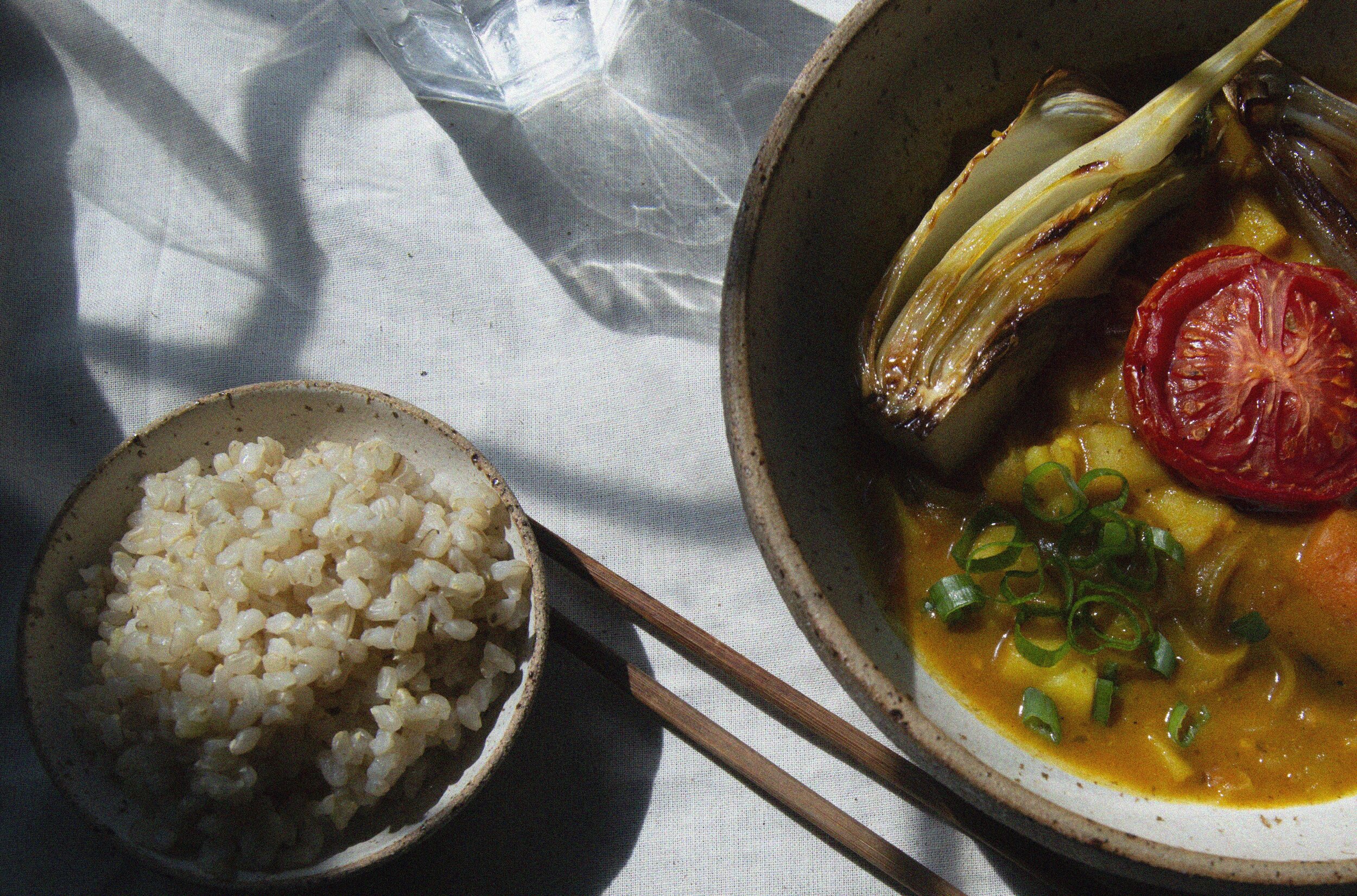umami journal's guide to making Japanese food at home
unagi chats to umami journal on how to recreate the perfect Japanese curry [カレー, karē] at home, as well as, a return to more sustainable ingredients and why educating the public on classic Japanese dishes is so important. umami journal has a unique approach to food journalism. Instead of just simply guiding us through recipes, it focusses on the anthropological importance of each dishes and context within their culture. Poppy Mist, founder of umami journal, hopes that the site provides a different perspective that will educate many on the origins of these classic dishes on the menu and provide inspiration for their cooking.
Words & Photographs Poppy Mist/ Illustrations © Diogo Rodrigues
Curry, or karë (Japanese カレー) is one of the most popular dishes in Japan and can be found served with Katsu, rice or udon noodles. Originally introduced by the British Navy in the late nineteenth-century, a time when India was under British rule, and its spices were widely exported. In the early 1900s the Japanese Navy began feeding the dish to their sailors, as its nutritional value helped combat beriberi (a disease caused by vitamin deficiency, and one that was prevalent amongst seafarers at the time).
Japanese curry is much milder than its predecessors, usually including meat, carrots and potatoes. In the present day, the curry sauce greatly differs and spice blocks are available in Japanese supermarkets for the ease of the consumer. umami journal features a simple vegetarian version on their site. For the recipe - click here.
Words & Photographs Poppy Mist/ Illustrations © Diogo Rodrigues
umami journal has many more recipes spotlighting Japanese food that captures typical home cooking, from easy to make pickles, to a brilliant Kombu Dashi [昆布だし]. In an era where many food choices are made based on sustainable eating, umami journal highlights the virtue of utilising ingredients found closer to home. The British Isles and Japan are connected by many things, including the unlikely ingredient: seaweed, the mineral-rich sea algae found in abundance on the shores of these island nations.
Seaweed was used in the British Isles by chefs and chemists but lost popularity over time, but now there has been a resurgence due to growing trend amongst Western chefs borrowing from Japanese gastronomy. It’s categorisation as a super-food (calcium, copper, and iron, are just a few of its many mineral properties) only adds to its interest from across the globe. Kombu (昆布) Dashi (出汁), a rich, savoury Japanese stock made from kelp, is a fundamental component of many of the country’s best-known dishes. Click here for the recipe to add this stock to your next ramen, or frozen as a great alternative to stock cubes.
Words & Photographs Poppy Mist/ Illustrations © Diogo Rodrigues
Japanese Curry Recipe
(Serves 2, Time 60 mins)
Start by preheating the oven to 200°C. Prepare your vegetables to roast and set aside.
To make your curry powder, place all of your spices that aren’t already ground in a small frying pan and toast on a medium heat for 3-4 minutes. Remove the husk from the cardamom, combine with the toasted and ground spices and salt, and blitz in a food processor until you have a fine powder.
Peel and thinly slice your onion. Put a large frying pan or wok over a high heat and add 2 tbsps of oil for 2 minutes. Place your onions in the pan and stir for 1 minute. Slowly reduce your pan to a medium heat and let your onions sweat for 7-10 minutes, stirring occasionally.




